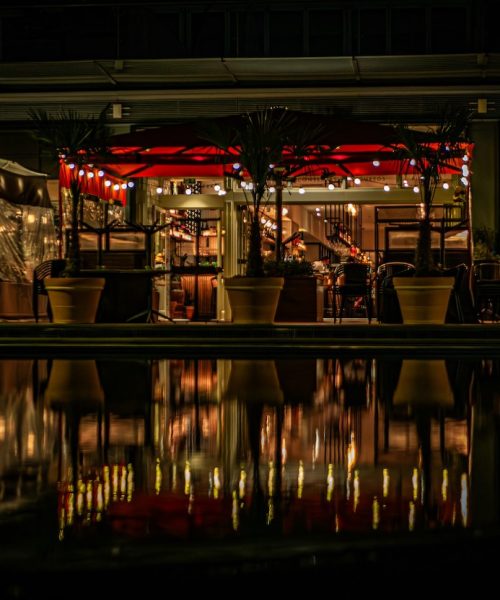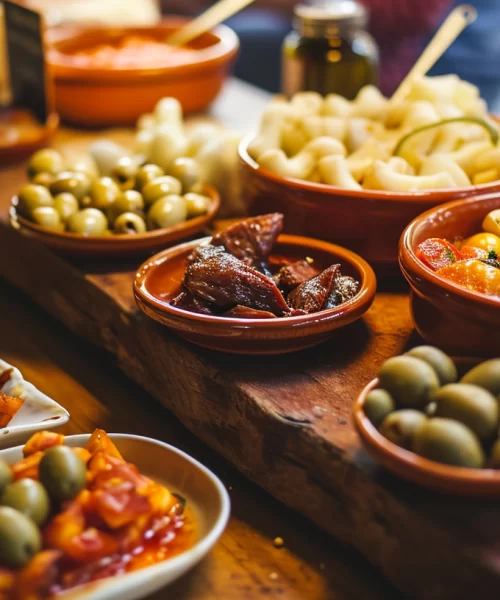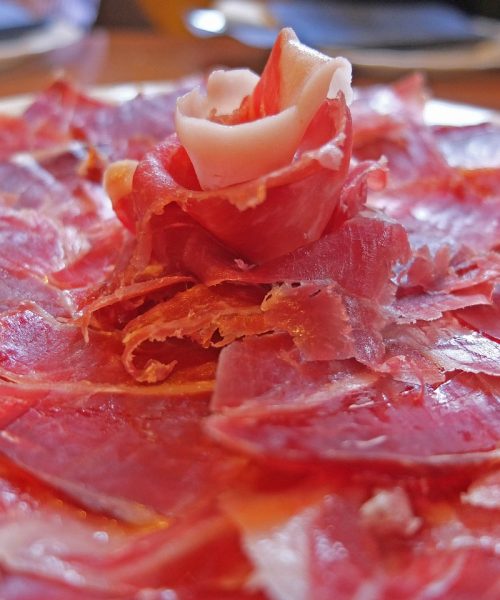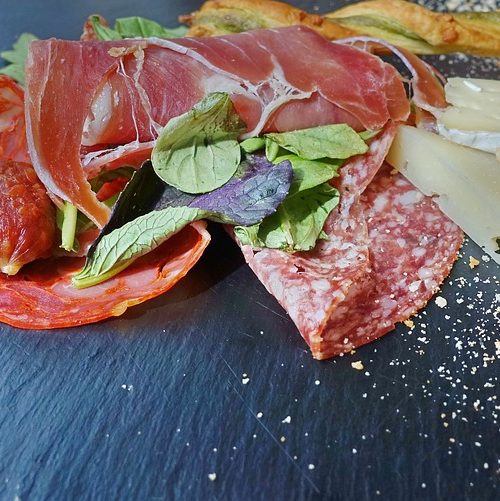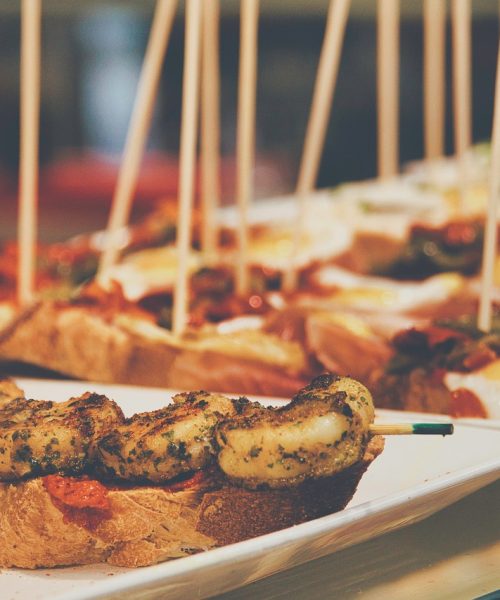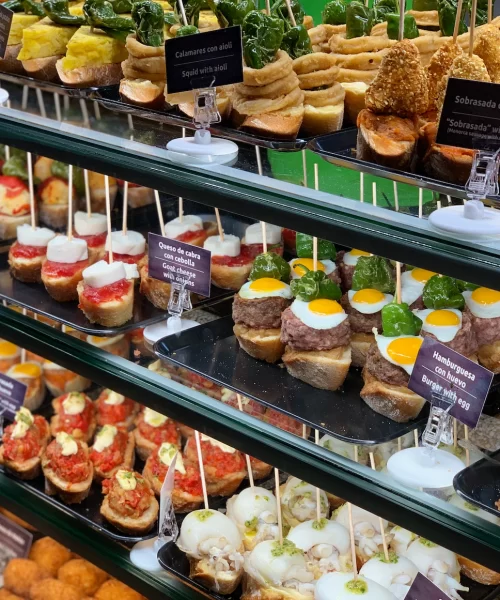Paella is the most international dish in Spain, but it has become so famous that its true essence is often lost because so many Variants and cooks add and omit ingredients and even vary the way of preparation.
In this handy guide we will take a closer look at all aspects of authentic paella: its preparation, the basic ingredients, the rice , the sofrito and much more. So read on if you want to know all the secrets of this legendary recipe.
What is paella?
The Paella is Spain’s most popular rice dish and the icon of Spanish cuisine. It’s hard not to get hungry when you see a large pan full of this wonderful dish. The warm, golden-orange glow of the rice, the strips of vegetables and the succulent shrimp or chicken.
Where does the paella come from
If you ask a Spaniard where to find good paella, he will tell you to fly to Valencia. Although its history is somewhat disputed, most agree that it originated in this town on Spain’s Mediterranean coast.
This particular rice owes its origin to the workers who still cultivated the Valencian fields a few decades ago. The workers placed a handful of rice in a shallow pan, filled it with local vegetables and leftover meat, and used the branches of a local orange tree to light the fire and cook the rice in the heat.
Paella Ingredients
The ingredients you find or use in your paella depend on the type of paella you want to make. The classic Valencian version is based on local ingredients such as typical Valencian vegetables such as broad beans and garrofon, chicken and rabbit, while the variants favored by many tourists in Spain are prepared with seafood such as prawns, squid or mussels. And of course there are also vegetarian versions of the paella with all sorts of vegetables such as green asparagus or artichokes.
Regardless of the type of paella, however, there are a number of essential ingredients whose quality affects the taste of the paella final taste of the paella: extra virgin olive oil, short grain rice (bomba rice is the best), fried vegetables, saffron and peppers from La Vera.
The paella pan
At this point we need to explain a fairly common confusion. The word paella means frying pan in Valencian and although the rest of Spain calls recipes prepared in this pan paella, in Valencia these dishes are simply called “arroz…”. For example, what we know as Paella Valenciana is known in Valencia as “Arroz a la Valenciana”.
A good paella pan should be wide and flat to allow for evaporation of the liquid and the Encouraging the development of a good socarrat: the crispy, caramelized layer of rice at the bottom.
While these pans are ubiquitous in Spanish home and kitchen stores, in other parts of the world one needs to be a bit more specific look to find them. Fortunately, in our online shop you can find the same paella pans used in Valencia, with excellent quality.
The bomb rice
Even if what goes on top looks delicious, a good paella is all about the rice. Short- or medium-grain, starchy, round rice varieties like Bomba or Albufera are the stars of the show. Some locals forget the ingredients and jump straight into the rice.
You may be wondering why the rice variety is so important. The answer is absorption. Spanish rice varieties like Bomba can absorb three times more liquid than similar varieties without falling apart. The result is a rice dish that is full of flavor down to the last grain.
The Fire
Traditional Valencian paellas were originally cooked over an open fire made with the branches of the region’s abundant orange trees. These have given the paella an even more aromatic taste. Today it is still prepared this way at family gatherings and even in some rice restaurants.
If you cannot prepare paella outdoors with orange wood, you can also prepare it in a traditional kitchen
The importance of sofrito in a paella dish
Before adding the rice to the paella pan, you need to create a good flavor base with the sofrito: the classic Spanish mix of steamed vegetables, aromatic saffron and paprika. When you fry rice in a paella pan with this amazing sofrito, it takes on a lot of flavor.
Water or broth?
Whether you Believe it or not, the traditional Valencian paella is cooked with water without using broth. When you eat an authentic Valencian paella, you’ll find that broth isn’t really necessary. A good sofrito gives the rice the flavor the paella needs.
However, a good broth can sometimes enhance the flavor of the paella. For example, for a seafood paella, you can use homemade fish stock to get an even tastier paella.
Introduction to Socarrat
While dishes such as risotto require the cook to stir the rice throughout the cooking process, paella does not. Most recipes recommend leaving the rice in the paella pan without stirring.
The key to this is the socarrat. It’s the bottom layer of the rice in the pan, that crispy, almost burnt crust. Eating a good socarrat is a fleeting experience. It’s a chewy, crunchy, caramelized delight that takes the flavor to heaven.
Chorizo in Paella?
Occasionally you can see paellas with chorizo in Spain and even more often abroad. This is a sacrilege for paella purists who believe that chorizo has no place in this traditional dish.
For many others it is normal to include chorizo in their paellas and even renowned chefs such as Simone Ortega include paellas with chorizo in their recipes.
In our humble opinion, the recipes do not belong to anyone and anyone is free to use the ingredients to experiment with the ones he wants to use for his preparations.
Valencian paella
Valencian paella is the best known and is prepared exclusively with local products. Living inland, the farmers and farmhands who prepared the first versions of the dish did not flavor their rice with different types of seafood. Instead, they took what they had on hand.
The traditional ingredients of a Valencian paella are rabbit, snails, chicken and vegetables from the Valencian garden, such as broad beans and garrofones, large beans, which are typical of the region and are difficult to find nowadays.

